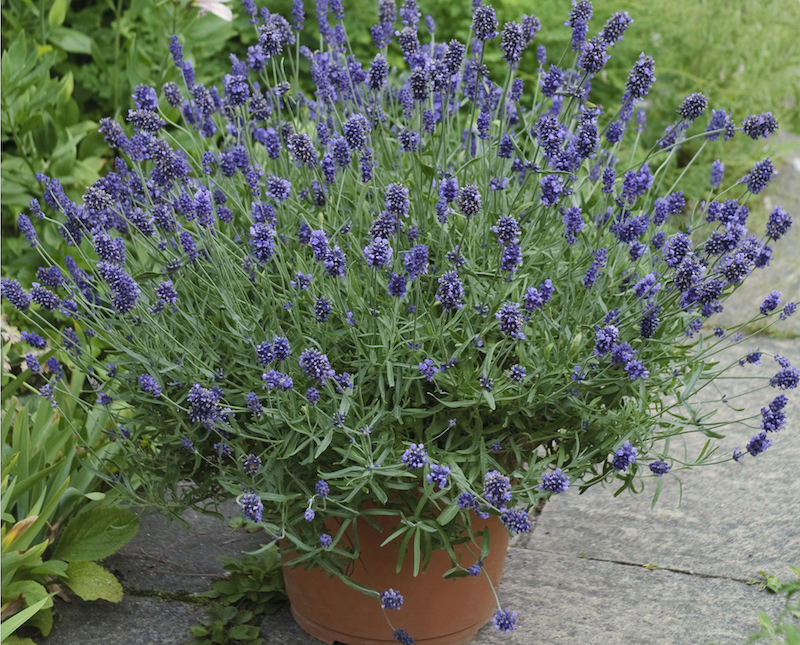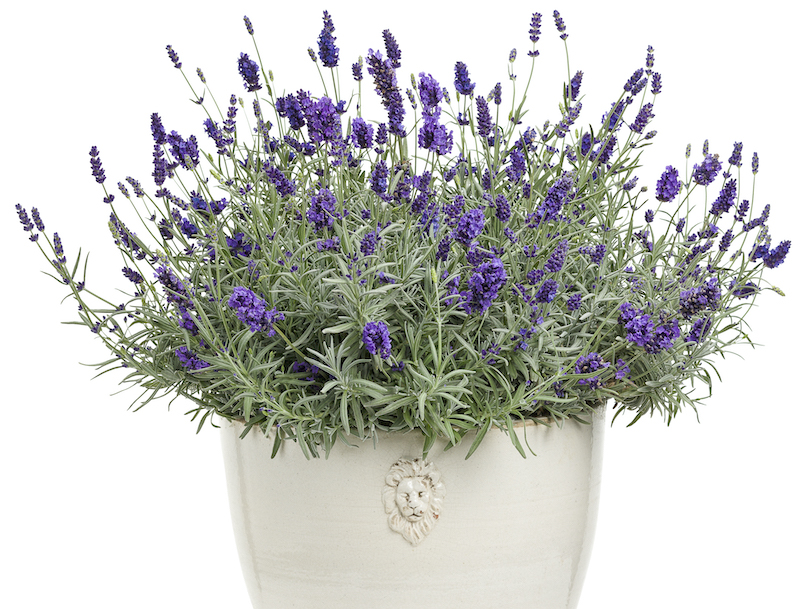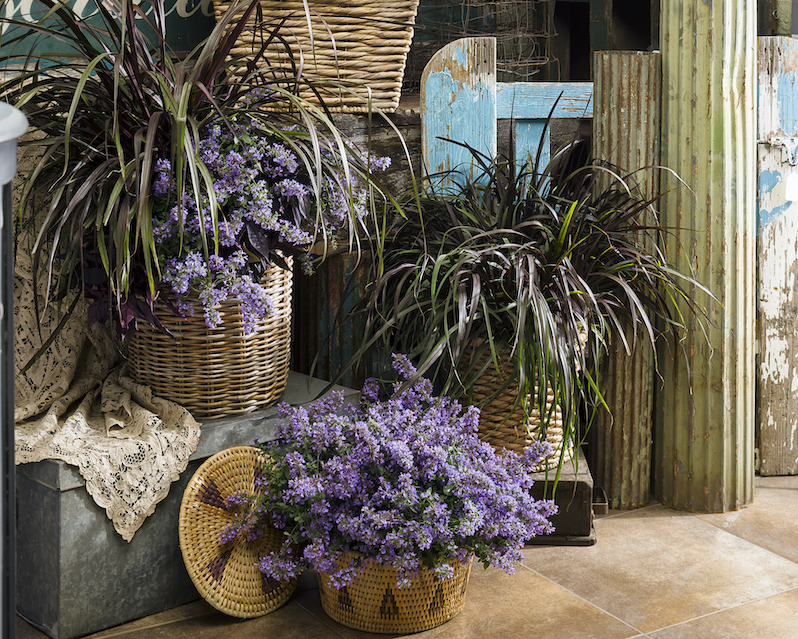Lavender is a widely adaptable plant to grow both in the landscape and in pots. Keeping new plants consistently watered during their first growing season will encourage overall healthy root development. Once lavender becomes established after a few growing seasons, it will develop drought tolerance, so watering will be less frequent. Growing lavender in pots requires a good growing site, well-draining potting soil, careful watering, and correctly timed pruning.

Planting Lavender in Pots
Lavender can thrive in pots if it is placed in a location that receives 8 hours of direct sunlight per day–the more sun, the better it grows and blooms. When selecting a container, be sure it will accommodate the eventual mature size of the variety you are growing. Lavender has an extensive root system and can become pot-bound fairly quickly. The container must have excellent drainage holes at the bottom, and space from the pot saucer so the pot isn’t sitting in standing water as it drains. This can be easily accomplished by adding stones to the saucer or using pot feet.

Best Soil For Lavender in Pots
Lavender must be planted in fast-draining soil. Add perlite to average potting soil to encourage drainage and particle aeration. Lavender will not tolerate standing water around its roots and will develop root rot if planted in soggy or slow-draining soil.
Caring For Lavender in Pots
Prune your lavender plant back after blooming. To do this, cut the flower stems back to about 7-10 inches from the crown on young plants–this encourages a fuller, bushier growth habit and promotes a second bloom cycle on certain reblooming varieties. On mature lavender plants, do not cut into the woody stems unless you notice a branch has died or suffered winter damage; these branches can be removed anytime. On a mature lavender plant, cut the stems back by about 1/3 after it has finished blooming; this maintenance helps rejuvenate the plant and maintain a tidy form.
Watering Lavender in Pots
Mature lavender grown in the landscape becomes drought tolerant because its extensive root system can reach far into the ground for moisture. However, when grown in pots, the roots have a limited reach based on the size of the container. Signs your potted lavender needs to be watered include dull-looking, droopy leaves. Allow the top few inches of soil to dry out in between waterings, and water younger plants more frequently.
Fertilizing Lavender in Pots
Lavender plants are very light feeders; in fact, less is more when it comes to fertilizing. Feeding should be done in early spring, just when you see new foliage growth appearing. Apply a dilute organic feed such as seaweed/kelp, shellfish, blood meal, or bone meal to refresh nutrients lost over time from watering. This helps to condition the soil and builds overall health by providing important trace minerals and valuable nutrients to feed your plants slowly. Always follow directions on the package.
Winter Care For Lavender in Pots
English Lavender is more cold hardy than other varieties such as Spanish or fern-leaf types. If you live in a milder climate, you can move your potted lavender to a more protected location such as up against a building to protect it from winter storms. It will still naturally receive rain and snow to provide the roots with moisture. In colder climates, you can sink the potted lavender in the ground in a protected area, where the soil can insulate the roots. Alternatively, bring the potted lavender indoors if you live at the lower end of its hardiness range. Keep it in a cool location near a window and water during the winter only when the soil is completely dry. Avoid placing the pot near a heating vent or register; the goal is to mimic a cooler winter dormant period.

Growing Lavender Indoors
Lavender requires a hardening-off period to produce blooms the following year. It needs cold exposure, so although you can grow lavender indoors year-round, indoor plants are usually weaker and shorter-lived than outdoor plants. Ultimately, lavender is best suited as a landscape or potted outdoor plant.
 |
Author Chris Link - Published 01-20-2023 |
